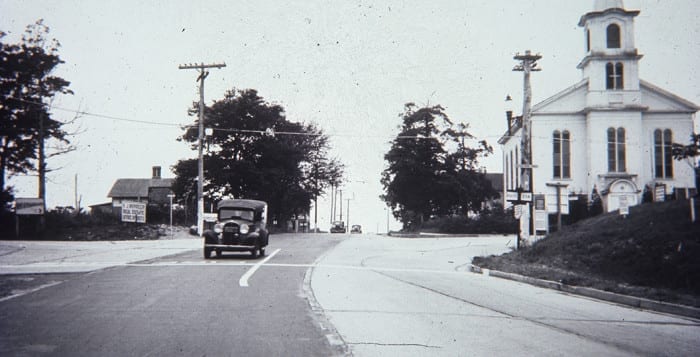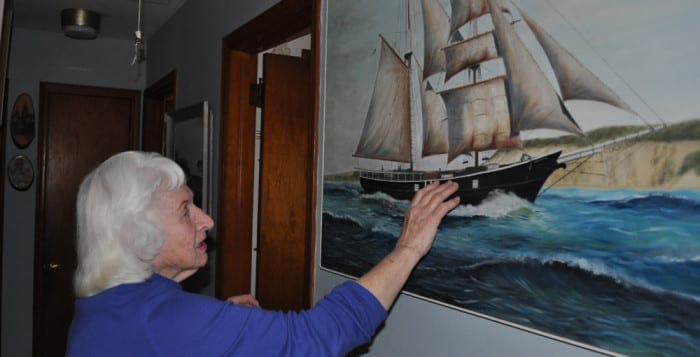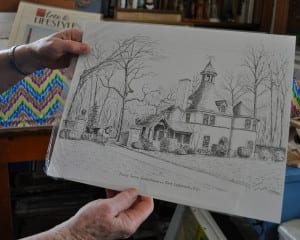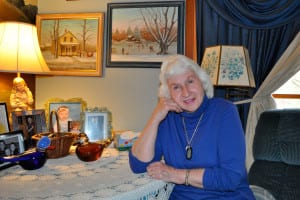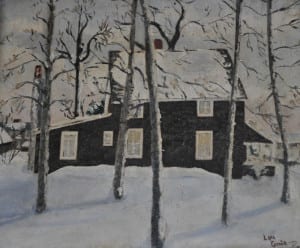The American Association for State and Local History (AASLH) recently announced the winners of the 70th annual Leadership in History Awards, the most prestigious recognition for achievement in the preservation and interpretation of state and local history.
Of 60 national awards honoring people, projects, exhibits, books and organizations, the Three Village Historical Society in Setauket was chosen to receive the 2015 Leadership in History Award of Merit for its current exhibit, “Chicken Hill: A Community Lost to Time.” The Award of Merit is presented for excellence in history programs, projects and people when compared with similar activities nationwide.
“The Leadership in History Awards is AASLH’s highest distinction and the winners represent the best in the field,” Trina Nelson Thomas, the awards chair and director of AASLH said in a statement.
The distinction is one Frank Turano, the curator of the exhibit, is very excited about.
“It’s an honor, a privilege,” he said. “It puts our organization in very elite company. The AASLH does not give out this award in every state every year, so it is a very, very selective award.”
“Chicken Hill: A Community Lost to Time” explores a particular neighborhood, formed in the mid-nineteenth century, that surrounded the Setauket United Methodist Church on Route 25A and Main Street in Setauket. At its height in the 1930s and 1940s, it was a community of workmen/laborers and businessmen comprised of immigrants from Poland, Lithuania, Russia and Italy as well as African Americans and Native Americans.
According to Turano, the Chicken Hill community dispersed in the 1960s when the Three Village area became a suburban community.
Asked what the inspiration was for creating this display, Turano said, “This exhibit honors people who have been the backbone of this community for as long as this community existed and people [who] were largely overlooked. They helped build the community, they help maintain the community today, and they largely are taken for granted or overlooked.”
The Chicken Hill exhibit has been warmly received by the community but Turano noticed that the general public “simply did not know that this community existed.”
“If someone spoke of Chicken Hill [in the past], more often than not, it was in disparaging terms and what I wanted to do with this exhibit was have people recognize the significance of that community,” he said.
The exhibit is constantly evolving, as the society is always accepting more memorabilia, stories and photos from the community. Since its inception last June, the Chicken Hill exhibit has now almost three times as many photos in its archives, which have been scanned and placed on digital frames. “We’ve built flexibility into the exhibit,” explained Turano. In addition, the exhibit includes a video featuring stories from residents who grew up in the community and an 1860 Robert Nunns piano recently restored by Michael Costa of Costa Piano Shoppes in Port Jefferson Station.
The award will be presented at a special banquet during the 2015 AASLH annual meeting in Louisville, Ky., on Sept. 18.
“It’s been a privilege working with the people that called Chicken Hill home and I have to thank society Archivist Karen Martin, Carlton “Hub” Edwards and the members of the [Three Village Historical Society] Rhodes committee who provided the information used to put the exhibit together,” Turano said.
“Chicken Hill: A Community Lost to Time” is currently available for viewing at the Three Village Historical Society, 93 North Country Road, Setauket, from 1 to 4 p.m. on Sundays and by appointment. For more information, call 631-751-2676 or visit www.tvhs.org.

